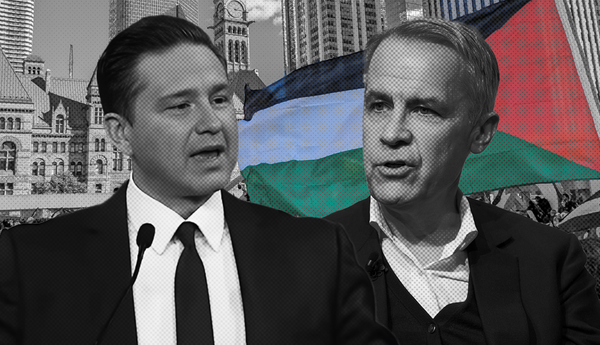Between Nov. 1, 2020 and Oct. 31, 2021, at least 4,327 people in British Columbia died from just three causes: 1,893 from COVID-19, at least 595 from extreme heat linked to climate change and at least 1,839 from toxic drugs. (The number of drug toxicity deaths in October 2021 has not yet been publicly released.) As CBC journalist Justin McElroy points out, this represents almost one in 1,000 of B.C.’s adult population. Each of these deaths marks a systemic failure to keep people safe.
There’s been a tendency among the media and others throughout the past couple of years to treat each of these health crises as entirely separate, caused by different things and with varying solutions. While each cause of death certainly deserves a nuanced approach, they shouldn’t be entirely disconnected from each other.
We need to understand how they intersect, why they do and why those in power benefit from us regarding them as entirely separate. This will be crucial to building solidarity and achieving real solutions to these crises.
COVID-19
Let’s begin with the only one of the three crises that’s being treated with any degree of seriousness in B.C.: the pandemic.
COVID-19 has contributed to an increase in drug toxicity deaths due in part to regulations around indoor gatherings. Households weren’t allowed to mix indoors this year until late May. Supervised consumption sites also had reduced capacity during the worst part of the pandemic. Karen Ward, a drug policy advisor for the City of Vancouver, told CTV in April 2020, “We’ve seen a huge spike in overdoses because people have nowhere to go. We say don’t use alone if you don’t have to — well now you have to.”
The pandemic also affected supply chains, including illicit drugs. Dealers in B.C. were getting less product, and cut more of what they did receive with other substances. An October report from the British Columbia Centre On Substance Abuse found heroin in just 5.1 per cent of drugs sold as “down” (ostensibly a mix of fentanyl and heroin), while fentanyl was present in 89 per cent of drugs sold as opioids.
Almost 32 per cent of opioids also tested positive for benzodiazepines. Fentanyl and benzos are known to be a deadly combination. Benzos are now also increasingly being found in stimulants such as cocaine — which serves to make those drugs more addictive, and more dangerous to consume even in small doses.
In terms of the climate crisis, it’s worth considering the effects of catching COVID-19. More than 213,000 cases of COVID-19 have been recorded in B.C. Though most didn’t require hospitalization, figures suggest that around 10 per cent of cases lead to long COVID-19, which includes lingering symptoms such as difficulty breathing, fatigue and chronic pain. We don’t know how many of the people who died from the heatwave over the summer had previously contracted COVID-19. But we do know that having these sorts of chronic health conditions raises the likelihood of death in a heatwave.
A pandemic, by its widespread nature, will impact a lot of people. Some of these people will become more vulnerable as a result of getting sick. And being more vulnerable means that when so-called extreme weather events happen, there’s a higher chance of bad outcomes. The B.C. government does not seem to have factored the existence of a higher number of vulnerable people into its disaster planning — mostly because they haven’t done much disaster planning at all.
Drug Toxicity
Some research suggests that the pandemic (and the ensuing depression and trauma it caused) may have pushed more people to take illicit drugs, or caused people who were in recovery to relapse. Certainly, alcohol and cannabis use went up for some. If a greater number of people started accessing B.C.’s illicit drug supply while it was becoming increasingly poisoned, that means more people were being put at risk of death with less access to harm reduction services than normal.
People who use drugs are also often bound up in other socio-economic vulnerabilities. Vancouver’s Downtown Eastside, for instance, is full of single room occupancy units that are notoriously unsafe. Dangerous housing is a risk factor for both substance abuse disorders and catching COVID-19.
The focus on COVID-19 as a health emergency has also served to sideline the drug toxicity crisis. While the provincial health officer has been focused on delivering regular COVID-19 briefings with updates on hospitalizations and deaths, that same level of information doesn’t exist for the drug toxicity crisis. Instead of weekly briefings and week-day numbers, poisoned drug deaths get a seemingly half-hearted monthly presser from the province’s chief coroner, Lisa Lapointe. It’s clearly possible for the government to mobilize a big, expensive response to this crisis in the way they’ve done for COVID-19. They just don’t want to.
Climate Crisis
Treating climate change purely as an environmental issue ignores how much the environment impacts human wellbeing. The effects of climate change on human health, such as respiratory diseases, heart attacks, strokes, skin damage, cataracts and cancer, are well-known and documented. In B.C., a doctor recently diagnosed a patient as suffering from “climate change.” So, the climate crisis, as a result of air pollution, has exacerbated COVID-19 deaths by helping to cause the sort of existing breathing problems that can make the virus deadlier.
Moreover, while global lockdowns did put a small damper on emissions in 2020, mass production of the single-use medical supplies necessary to fight the coronavirus — masks, syringes, personal protective equipment — has meant huge amounts of plastic production, as well as vast quantities of waste. Climate plans going forward need to adjust for this increase, and work to reduce and offset it in a meaningful way.
Climate catastrophes have also been linked to increased drug use. Pennsylvania State University professor Stephen Goetz found that drug-related deaths in New Orleans spiked in the years after Hurricane Katrina, and also crept up in places dealing with the after effects of Hurricane Sandy. People who lived through the 2013 Toronto floods or 2016 Fort McMurray wildfires also saw notable impacts on their mental health.
In B.C., hundreds of people have lost their homes this year already, and many more may now find all their possessions ruined by floods and mudslides, their bank accounts drained in the clean-up, and their hopes and dreams swept away or burnt up. And that’s to say nothing of the ongoing climate despair that comes from understanding how fucked the world is, and how little our leaders seem to care about fixing it.
If all three crises are interconnected, why do those in power treat them separately? What good does it do for them to present these issues as unrelated?
For one, it helps set priorities. Drug poisoning deaths are dealt with by Sheila Malcolmson, B.C.’s minister of mental health and addictions; COVID-19 deaths are dealt with by Adrian Dix, minister of health; climate catastrophes are parcelled off to Mike Farnworth, minister of public safety. This means that “drugs” and “climate change” aren’t also properly being considered as health issues.
Subdividing what counts as “health” means governments can prioritize some causes of death over others. COVID-19 affects everyone (though racialized and low-income people most acutely), so it has the highest priority. Poisoned drugs largely affect already marginalized people, so the crisis is perceived as not needing much in the way of funding or attention. And climate disasters, while dramatic, are easy to write off as ‘unprecedented’ or ‘once-in-a-lifetime events’ to excuse poor preparation, and brush off accusations that more should have been done.
Siloing problems into their own neat little containers also encourages the public not to think too closely about these connections. It then places these crises in competition with each other, by pretending there isn’t enough money. The public can bicker between themselves over what is the most important issue, while governments get away with relative inaction. So for example, if the provincial government pledges to spend $500 million on “mental health and addictions services,” there will be people complaining that it would be better used on other things.
This kind of competitive thinking is further stoked by the media, particularly Postmedia publications that will talk up the perils of budget deficits at all levels of government. The columnists at these papers try to present a “common sense” approach that provincial or national finances are the same as on an individual level, while ignoring that this isn’t the case. They’ll also frequently ignore how much of the budget goes to the police.
The solution to fatal crises is not debating which one gets a bigger slice of the pie — it’s having a bigger pie. People die from climate catastrophes, poisoned drugs and COVID-19, but these deaths are all predicated on the same sort of policy failures. All of these crises can, should and need to be dealt with at once, because they stem from the same source.
A system that places profit above human life will always stifle attempts at real change. But it’s crucial to act in solidarity with each other, as failings in any one of these deeply intertwined crises serve to hurt us all.
We don’t need piecemeal, partial solutions. We need radical action.







